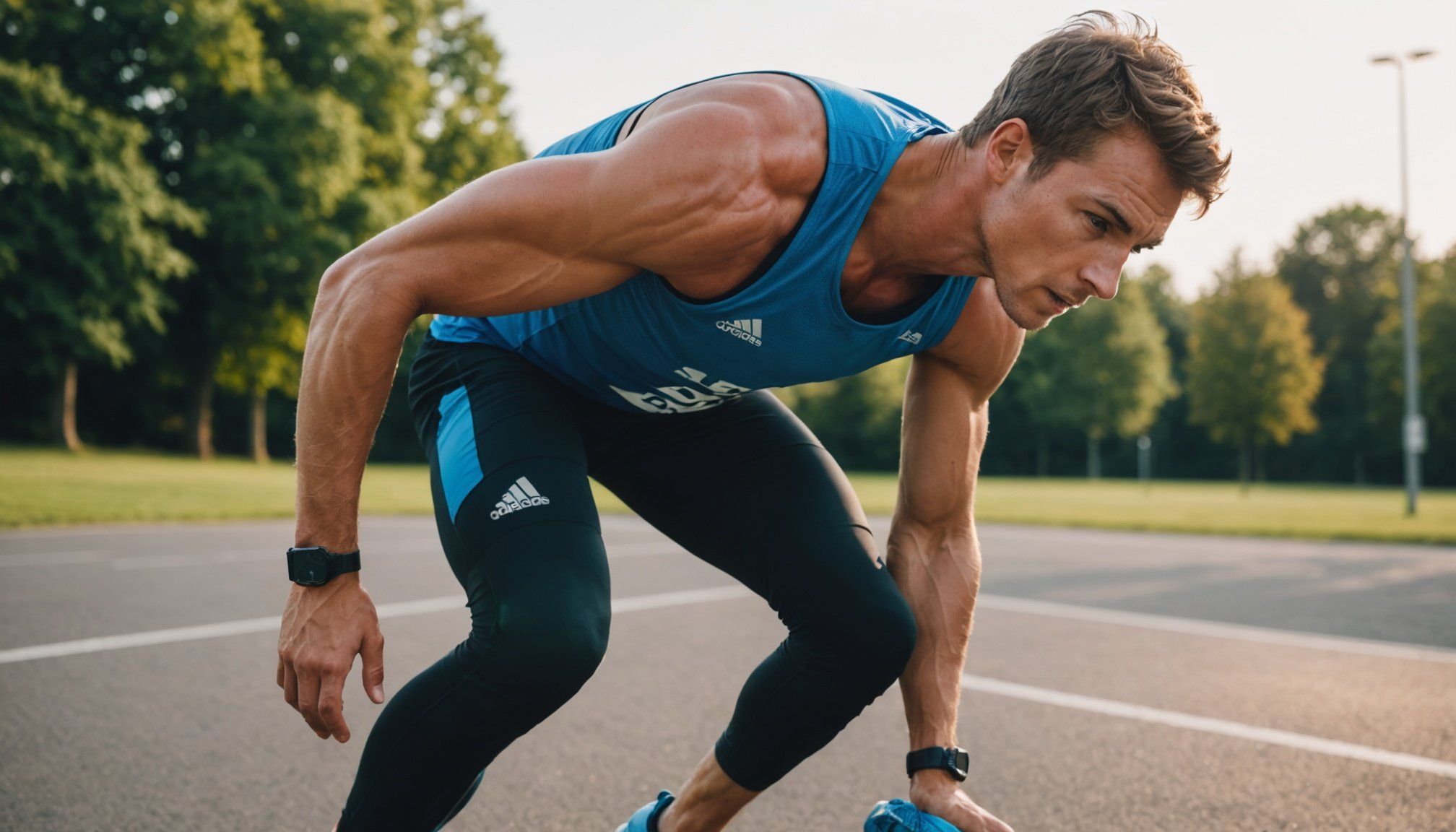Understanding Post-Workout Recovery
The importance of recovery after exercise cannot be overstated, especially for amateur athletes who want to improve performance and prevent injuries. Effective post-workout recovery techniques are crucial for physiological repair, allowing muscles to heal and reducing the risk of overuse injuries. Such strategies are not just about resting; they encompass a variety of methods tailored to individual needs.
Firstly, understanding the physiological benefits can motivate athletes to integrate recovery practices into their routines. When muscles are given time and the correct environment to repair, they grow stronger, which in turn enhances overall athletic performance. Athlete recovery strategies that include adequate rest and active recovery can significantly aid this process.
Also to see : Boosting cognitive potential: creating perfect sleep spaces for students in the uk
Incorporating recovery into training plans optimises post-workout recovery techniques and greatly impacts long-term success. Techniques such as dynamic stretching, proper nutrition, and hydration are effective in preparing the body for the next session. Equally, mental relaxation plays a role in holistic recovery strategies, aiding stress management.
Recognising that recovery is an essential part of training helps athletes to structure their workout regime. By acknowledging its role, amateurs can adopt recovery techniques that ensure they are not only prepared for future workloads but also minimise the risk of injury through well-designed athlete recovery strategies.
This might interest you : Essential tactics for uk professionals to overcome chronic fatigue and boost productivity
Effective Cooling Exercises
Cooling exercises play a pivotal role in muscle relaxation techniques and form an essential component of any athlete’s post-workout regimen. They aid in bringing the heart rate down to resting levels and initiate the body’s recovery processes.
Examination of Cooling Exercises
Selecting the appropriate recovery exercises ensures that amateur athletes maximise the benefits of their routine. These exercises often include activities such as light jogging, stretching, and progressively slower-paced activities following high-intensity workouts. Each of these techniques are specifically designed to prevent stiffness and soreness by gradually reducing muscle temperature and metabolic rate.
Step-by-Step Execution
To effectively implement these cooling exercises, begin with low-intensity movements such as walking for five to ten minutes. This can be followed by flexibility movements including gentle, static stretches focusing on major muscle groups worked during the session. Stretch each muscle group for approximately 20 to 30 seconds to effectively soothe and relax tired muscles.
Efficacy of Cooling Exercises
Scientific evidence supports the efficacy of cooling exercises in enhancing post-workout recovery. Studies indicate a correlation between a structured cool-down routine and reduced muscle soreness, improved circulation, and expedited recovery time. Such efficient practices cater to both body recovery and performance enhancement, an ultimate goal for athletes at any level.
Stretching and Mobility Work
Incorporating post-workout stretching into your routine is essential for effective muscle recovery and flexibility improvement. It’s not just about cooling down; it’s about preparing your body for the next challenge. Understanding both static and dynamic stretching techniques can greatly enhance your fitness regime.
Types of Stretching Techniques
Static stretching involves holding a stretch for 15 to 60 seconds, which helps in gradually lengthening muscles and improving flexibility. It’s best practiced when muscles are warm. Conversely, dynamic stretching involves controlled movements that can increase your range of motion, preparing muscles and joints for future activity. These pre-workout and post-workout routines have unique benefits contributing to a well-rounded recovery strategy.
Recommendations for Sports-Specific Mobility
For targeted mobility exercises, sports-specific routines should be considered. For instance, runners can benefit from hip and calf stretches, while swimmers may focus on shoulder mobility. It’s crucial to tailor stretches to your sport’s specific demands. Here’s how:
- Runners: Prioritise dynamic hip flexor and quad stretches.
- Swimmers: Emphasise shoulder rotations and arm swings.
- Cyclists: Opt for hamstring and lower back stretches.
Embracing these practices boosts recovery and enhances long-term athletic performance. Remember, flexibility is a key component in preventing injuries and maintaining optimal athletic function.
Nutrition for Recovery
Incorporating an effective post-workout nutrition plan is essential for assisting in athlete recovery and enhancing overall performance. Key nutrients such as proteins, carbohydrates, and fats play a critical role in muscle repair and glycogen replenishment. A balanced athlete recovery diet should include lean proteins, whole grains, and healthy fats to support these processes.
A practical approach to post-workout nutrition involves planning meals and snacks that provide these macronutrients. For instance, consuming a protein-rich smoothie or a turkey sandwich on whole-grain bread can effectively kickstart recovery. Additionally, incorporating fruits and vegetables supplies essential vitamins and antioxidants, aiding in reducing inflammation and promoting healing.
Hydration strategies are equally vital as water is crucial for every cellular function during recovery. Maintaining electrolyte balance with drinks containing sodium, potassium, and magnesium ensures proper hydration and muscle function. Incorporating these strategies into a routine minimizes the risk of dehydration, especially after intense workouts.
Tailoring your nutrition to your workout intensity and individual needs optimizes recovery. This ensures that athletes are not only prepared for subsequent training sessions but also promote long-term health and performance. Prioritising a well-rounded recovery diet is crucial for achieving athletic goals.
Cooling Techniques Beyond Exercise
Exploring recovery techniques that extend beyond traditional exercise routines can significantly enhance an athlete’s post-workout regimen. Among these methods, body cooling methods like cold showers, ice baths, and cryotherapy offer unique advantages. Cold showers can be convenient for amateurs, offering a practical and accessible means to invigorate the body and potentially reduce inflammation. Ice baths, although more intensive, provide benefits by reducing muscle soreness and accelerating recovery when used post-exercise.
However, these techniques have potential downsides. Cold showers might not be ideal for those sensitive to cold as they can cause discomfort or even stress if not accustomed to chilly temperatures. Ice baths may also be challenging, requiring more preparation and time, which can be impractical for some amateur athletes.
When considering relaxation strategies, athletes should weigh their preferences and needs. Some might prefer a gentle approach like a cool shower, while others may find the intensity of an ice bath more beneficial after particularly demanding workouts.
Selecting the appropriate cooling technique should involve understanding individual responses and consulting resources or professionals if uncertain. By tailoring recovery techniques to personal preferences, athletes can optimise their recovery and enhance overall performance.
Mental Recovery and Relaxation
Focusing on mental recovery techniques is as crucial as physical recovery for athletes. When you ask, what role does mental recovery play in overall performance? The Stanford Question Answering Dataset (SQuAD) method tells us: Mental recovery enhances cognitive function, reduces stress, and promotes emotional well-being. This supports better decision-making and focus, crucial for athletic performance.
Incorporating relaxation exercises such as meditation and deep breathing can significantly aid stress management for athletes. Meditation, for instance, encourages mindfulness and reduces anxiety, contributing to decreased mental fatigue. Deep breathing techniques, on the other hand, can lower the heart rate and cortisol levels, leading to overall relaxation.
Why is stress management pivotal? Primarily, it bridges the gap between mental and physical recovery. Effective stress management ensures the body can more efficiently heal and restore energy levels, reducing injury risk and enhancing readiness for future workouts.
To bolster your recovery regimen, consider integrating these practices:
- Meditation: Aim for short, regular sessions.
- Deep Breathing: Incorporate into daily routines for immediate stress relief.
By tailoring these mental recovery techniques to personal preferences, athletes can enhance their resilience and optimise both mental and physical recuperation.
Accessibility of Recovery Resources in the UK
For amateur athletes in the UK, accessing broad and efficient recovery resources can greatly enhance their training and performance. Various athlete support services offer aid, focusing on recovery practices necessary for improving endurance and maintaining health.
Numerous community support programs are available, often including workshops on recovery techniques and methods. These programs provide beneficial platforms where athletes can learn about recovery resources available in the UK. Such community initiatives also facilitate networking, allowing athletes to share experiences and insights.
Building a support network for recovery not only helps in gaining different perspectives on effective strategies but also keeps amateur athletes motivated and committed to their regimes. These networks encourage a holistic approach to recovery, blending both physical and mental facets for comprehensive well-being.
Understanding available resources can dramatically impact an athlete’s approach to training. Identifying supportive opportunities and leveraging them helps in tailoring recovery strategies to individual needs. By utilising these athlete support services, amateurs can receive personalised guidance and professional advice, which is essential for optimising their performance and advancing their athletic pursuits.
Expert Opinions and Evidence-Based Practices
In the realm of sports recovery, expert advice on recovery plays a pivotal role in guiding athletes towards effective strategies. Experts emphasize the integration of scientifically backed recovery methods. For instance, evidence-supported practices, such as contrast water therapy, show promise in reducing muscle soreness and accelerating recuperation. These evidence-based techniques are continually refined through ongoing research and application within sports science.
Athletes benefit significantly from aligning their routines with proven strategies. Recent findings highlight the effectiveness of specific recovery techniques like combining active cooling with static stretching. Such combinations not only shorten recovery times but also improve flexibility and overall muscle health, supporting enhanced athletic performance.
Testimonials from UK amateur athletes reinforce the value of these methods. Their experiences echo the importance of adhering to expert advice on recovery, underscoring the advantages of incorporating verified practices into their daily regimen. Many have reported substantial improvements in both recovery duration and quality, attributed to these researched strategies.
Understanding and utilising expert recommendations can pave the way for amateur athletes to achieve better recovery outcomes. Aligning their practices with evidence-based techniques ensures they maintain peak performance and reduce the risk of injuries.











